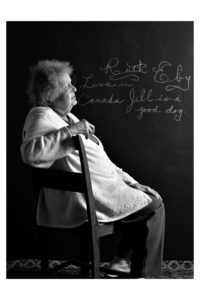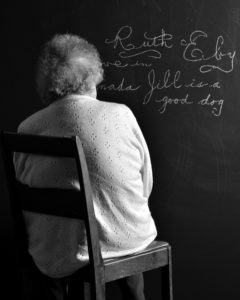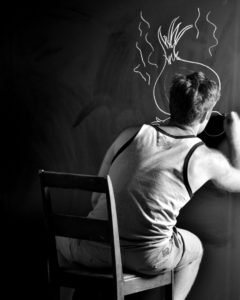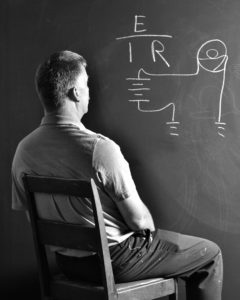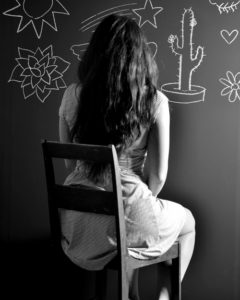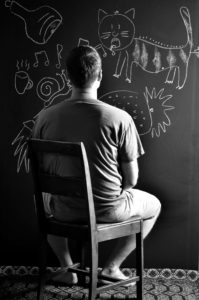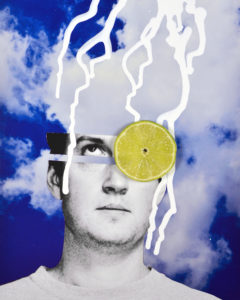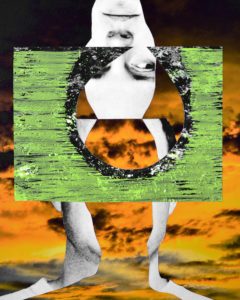These photographs explore identity and how portraits can artificially shape how others view us, unconsciously reveal things about ourselves and when created in the manner of the Surrealists be used to pose questions about our subconscious selves. Both series employ the gaze as a device to ask questions about the subject.
In the first series, the subject sits in front of a chalkboard. Each person has drawn chalk images on the board that relates to themselves and in doing so reveal something about their inner thoughts and emotions – what is on their mind at that moment, what are they thinking and feeling. I played with the negative space and cropped Ruth sharply to the left of the frame emphasizing her curved hunched body shape. She appears sad and weaker than the other image where she is sitting confidently in profile staring out into space perhaps happily contemplating her long life. I cropped Chris sharply to the right to emphasize the negative space and dramatize the active motion of reaching to draw on the board. He appears young and energetic. How others view us in space whether close or at a distance affects how we are perceived by them. Space between the viewer and subject and the space around the subject becomes a crucial part of the gaze of others. Too close and we are uncomfortable. Too far and we don’t connect emotionally.
The second series looks at the gaze from a surrealist viewpoint by removing and hiding parts of the faces to emphasize where the subject’s eyes are looking. This creates ambiguity about the image and what is being said. The eyes in the spliced image look in various directions suggesting the multiple sides of our personalities. The image gazing upwards with drips of paint and a lime blocking one eye evokes questions about what influences us. Where do our thoughts come from? The orange sunset image suggests the dark and light sides in each of us. Much of who we are is hidden, there is only one visible eye and it is upside down to the viewer. The final image of two bodies with a snapshot in place of the face suggests that place and geography may also define who we are.
